Basic easy to maintain west coast front help
User
6 years ago
Featured Answer
Sort by:Oldest
Comments (42)
Yardvaark
6 years agoUser
6 years agoRelated Discussions
Really basic question...
Comments (19)I zapped myself. I sometimes presume too much latitude. Common sense tells me there are likely countless really great places to buy plants in your area; yankee directness too often overrides the politesse so many presume; I calls 'em as I sees 'em. I hope New Englanders won't be deemed "persona non grata" for all time; at the least I hope you'll be prepared for regional directness. I also know it takes time to develop the "rounds" that will enable you to locate the sorts of places that suit your personal aesthetic or be able to understand it. I can tick off about a dozen local nurseries (in an area a lot smaller than Houston), and I visit only 3-5 on a routine basis. I know I can buy the cheapie, filler s--t just about anywhere. I know who has the more unusual plants and who has the really "tastey" plants. With some practice, and some repeated trips you will be better able to distill your "rounds", too. Hang in there... you asked a seemingly simple question that really has no simple answers. The fact that you asked it implies that you have more than a passing interest in success in your plantings. Attempting to be "attitude-free" (yeah, as IF ), Chelone...See MoreHelp buying bulk compost? Basic principles plus local brand names
Comments (11)Kristimama wrote: > Is an all-plant compost (OMRI certified or not) sufficient OM for a productive veggie garden? I'm a complete beginner, but I don't think an all-plant compost is inferior in the least. Not sure but you seem to want to give all-plant composts an inferiority complex :-) Here's a quote from Ann Whitman's and Suzanne DeJohn's book called "Organic Gardening for Dummies" (for dummies like me): "Before buying the compost, ask about the primary organic-matter sources that were used to make the compost. Compost made from yard waste (leaves and grass clippings) is considered to be the safest and best. Other compost may contain ingredients that had contaminants, such as herbicides from agricultural crop residues and heavy metals from municipal wastes, which may affect the growth of your plants or accumulate toxins in your soil. Ask if the finished product is tested for contaminants." When I read above that "Compost made from yard waste (leaves and grass clippings) is considered to be the safest and best," I was spurred on to make my own compost. I don't think there's anything inferior about plain old leaves and grass. To the contrary, they seem to be really good stuff. So good in fact, that tomorrow I'm going to transfer the 3 cubic feet of chopped leaves, grass, and fruit peels from my small trash can to a much bigger round plastic barrel and add even more leaves and grass, doubling the size of the organic matter from 3 cubic feet to 6 cubic feet. "Let It Rot!" seems to be a popular book on Amazon.com about composting. Ordered it a couple days ago....See MoreI need basic help on...How To Clean
Comments (22)Oh, hi emmhip! :) I completely know what you mean. And while I subscribe to FlyLady's emails, I haven't checked them (my "list" email is the most organized thing in my home - it all goes to separate folders in my inbox, lol). Anyway, what I've been doing is just a bit here and there. Today, I went through all the drawers in my dresser, and got rid of matchless socks, underwear that weren't ever going to be worn by me again, and assorted other things that I was no longer using or planning to use (including a Motherhood slip - my youngest if now 4 years old, ahem). I also cleaned (with a toothbrush!!!) my bathroom sink, including wiping down the cabinets. Thoroughly cleaned the toilet, too. I've been vacuuming every day for the last week, and sweeping, too. Two days ago, I finally cleared (what a task!) the table and counters except for two hotspots that I'm still working on. The kids' bathroom had a decent clean two days ago; I still need to go in and do an "on my hands and knees" floor cleaning. And my laundry? Well, it's caught up only because we recently bought the largest capacity washer (and matching dryer - our old washer broke, perfect timing!) and for the first time EVER, my laundry has been caught up without my hubby stepping in to help. :) I LOVE my new W&D, and have taken meticulous care of it (I follow the care instructions carefully, lol). I was so proud the other day when I washed all the kids' bed linens in one day. I'm sure that hasn't been done before (by me, anyway). However, my wood floor is still in bad shape, and I really need to wipe down all the kitchen cabinets, and most of the doors in the house. My daughters' room is still a mess, but that's largely because my 7yo dd has learned my bad habits, so we both need work. ;) Anyway, there's still much to do, but I trust that FlyLady's admonition to take baby steps will eventually get me to where I need to be. And also, this isn't really part of the above, except that it is FOR ME, but about 3 months ago, I was dx'd with severe ADD symptoms and mild/moderate depression. I've been on Wellbutrin since then, and the change has made all the difference for me. It was slow getting here, but when I look back to where I was before, I'm amazed at the difference in how I feel, and how far I've come. The above probably doesn't apply to most folks, but I feel I'd be disingenuous if I didn't include it as well. Anyway, it's hard to struggle and feel like you can't get ahead, and then, to be so overwhelmed in your own home that it's not relaxing, but rather stress-inducing, and I realized I was the only one who could change that for me. And I am, slowly but surely. Best of luck to you, and yes, get that book! (Don't worry about her time tables for cleaning - for that, I'm fine with FlyLady's plan - I just need to know the "how-to" of taking care of a home.) Best of luck to you - you need to trust that you can do it, and that the changes will be their own reward, and even more....See MoreWest Australian Garden on East Coast
Comments (13)Perhaps you could have a trip to Mount Annas(Correct Name?) which I beleive has native plants from all over and discover what they do with the WA natives. I thought Kangaroo paw like it a bit damp and sandy. We had a man from Strathmerton,Vic.speak at APS the other night who ripped up his clay fairly deeply, mulched, hilled and swailed, and had good results. Yes it has to do with microclimate and soil . Research to learn about the plants' natural habitat. After all some WA plants do not grow in sand. Don Burke has a good native garden. But Mount Annas National gardens would be your best bet....See MoreUser
6 years agoYardvaark
6 years agoUser
6 years agoUser
6 years agogardengal48 (PNW Z8/9)
6 years agoUser
6 years agogardengal48 (PNW Z8/9)
6 years agoUser
6 years agoemmarene9
6 years agogardengal48 (PNW Z8/9)
6 years agolast modified: 6 years agoUser
6 years agoYardvaark
6 years agogardengal48 (PNW Z8/9)
6 years agoUser
6 years agogardengal48 (PNW Z8/9)
6 years agoKim in PL (SoCal zone 10/Sunset 24)
6 years agoUser
6 years agogardengal48 (PNW Z8/9)
6 years agoUser
6 years agogardengal48 (PNW Z8/9)
6 years agoYardvaark
6 years agogardengal48 (PNW Z8/9)
6 years agolast modified: 6 years agoYardvaark
6 years agoKim in PL (SoCal zone 10/Sunset 24)
6 years agolast modified: 6 years agoYardvaark
6 years agogardengal48 (PNW Z8/9)
6 years agoYardvaark
6 years agogardengal48 (PNW Z8/9)
6 years agoUser
6 years agoemmarene9
6 years agoUser
6 years agowhitewatervol (Z 8a/7b Upstate SC)
6 years agoYardvaark
6 years agoUser
6 years agoUser
6 years agogardengal48 (PNW Z8/9)
6 years agowhitewatervol (Z 8a/7b Upstate SC)
6 years agoUser
6 years agogardengal48 (PNW Z8/9)
6 years ago
Related Stories
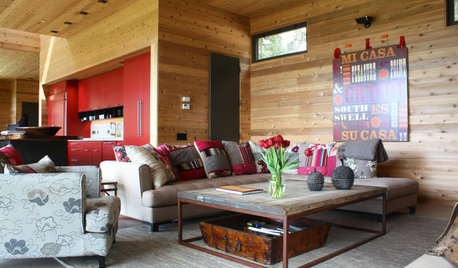
HOUZZ TOURSMy Houzz: Contemporary Camp Style Wows on the U.S. West Coast
Guest cabins, a barn for parties and a spacious communal bathroom make a couple's coastal home an entertaining dream
Full Story
GARDENING GUIDESRegal Lavender Rules Gardens Coast to Coast
Learn how to grow this fragrant, beautiful herb and show off its full beauty in the landscape
Full Story
GREEN BUILDINGGoing Solar at Home: Solar Panel Basics
Save money on electricity and reduce your carbon footprint by installing photovoltaic panels. This guide will help you get started
Full Story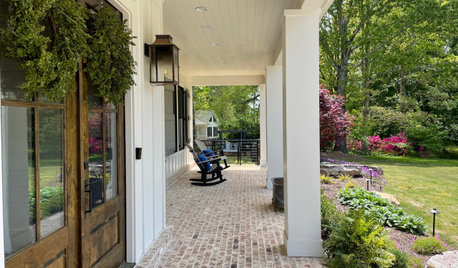
EXTERIORS10 Essentials for a Welcoming Front Porch
A few well-chosen pieces can help make your porch comfortable for relaxing and greeting neighbors
Full Story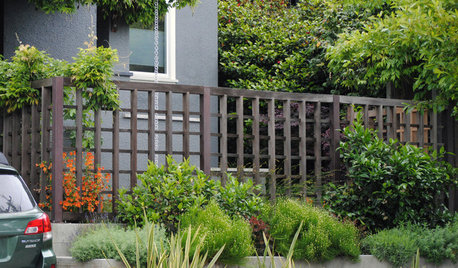
LANDSCAPE DESIGN7 Stylish Front Yard Ideas for Homes on Busy Streets
Create privacy and cut down on traffic noise while maintaining curb appeal
Full Story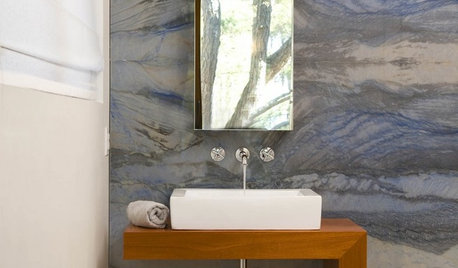
BATHROOM DESIGNDesign an Easy-Clean Bathroom
These ingenious strategies and sleek designs for the sink, tub, shower and toilet help your bathroom practically clean itself
Full Story
CONTAINER GARDENSContainer Garden Basics: How and When to Water Potted Plants
Confused about soil moisture, the best time to water and what watering device to use? This guide can help
Full Story
MOVINGRelocating Help: 8 Tips for a Happier Long-Distance Move
Trash bags, houseplants and a good cry all have their role when it comes to this major life change
Full Story
WINDOW TREATMENTSEasy Green: 9 Low-Cost Ways to Insulate Windows and Doors
Block drafts to boost both warmth and energy savings with these inexpensive but effective insulating strategies
Full Story



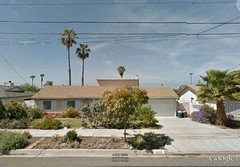


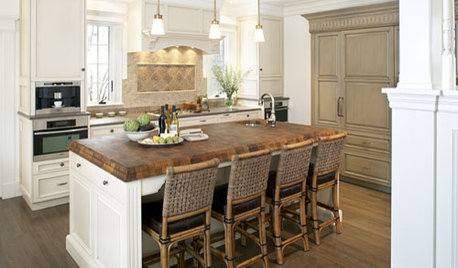

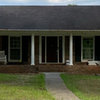

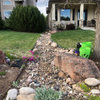

Yardvaark